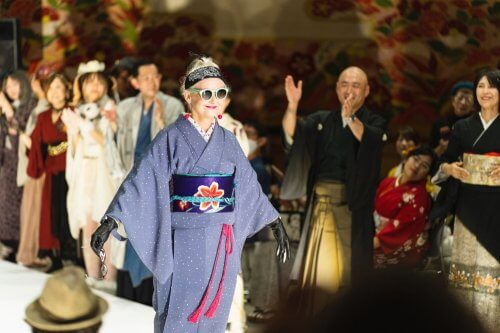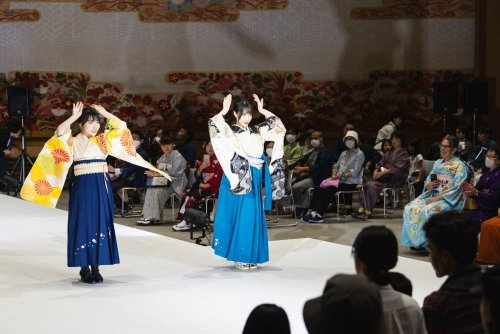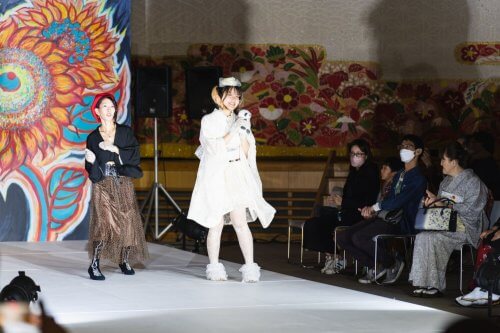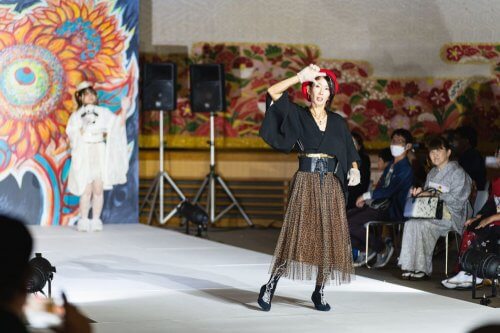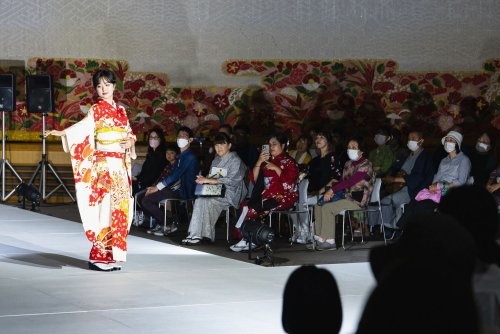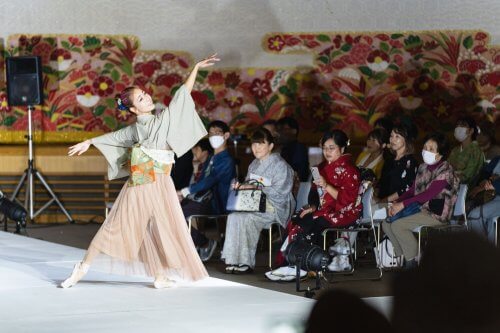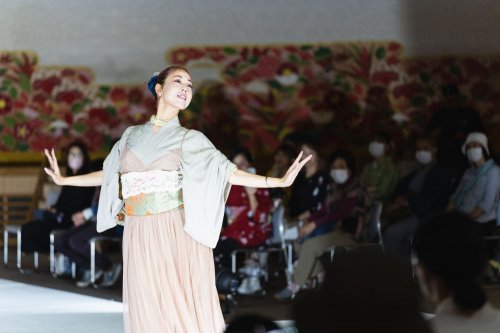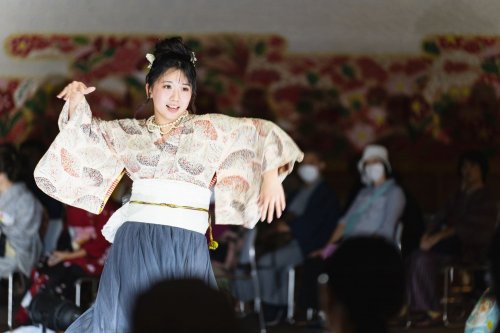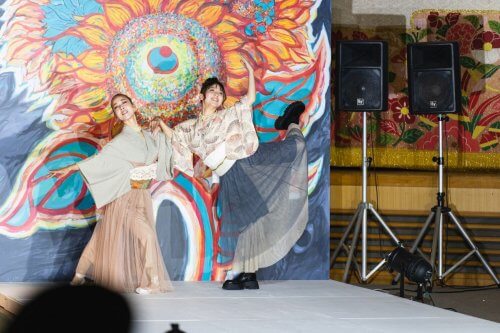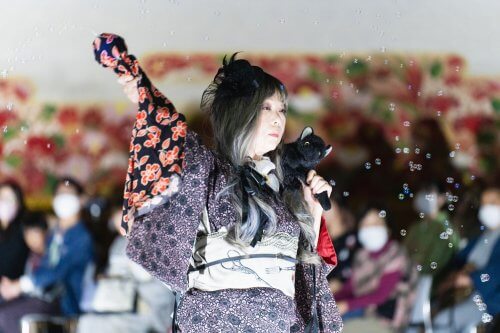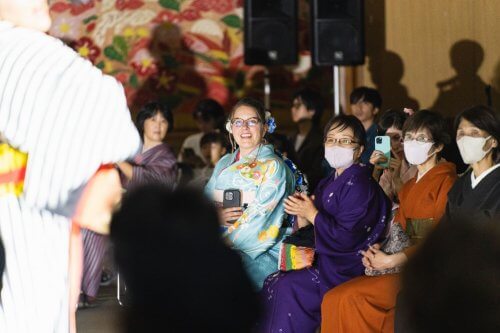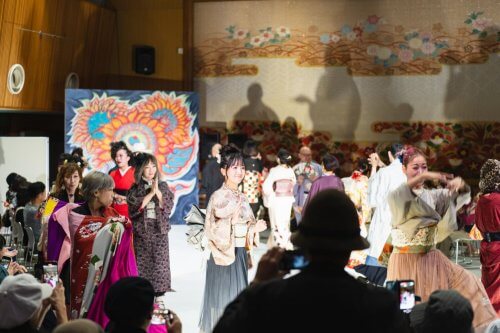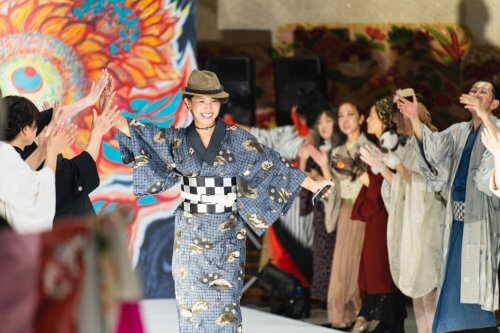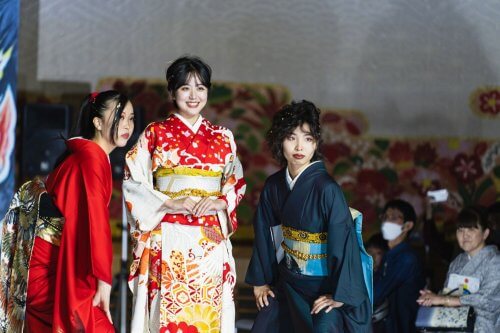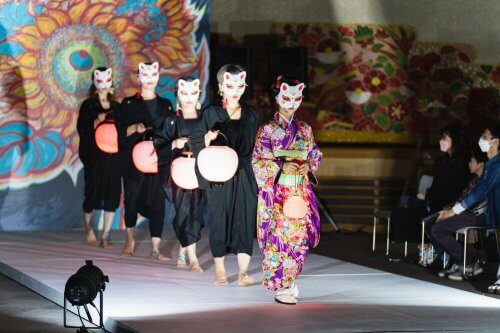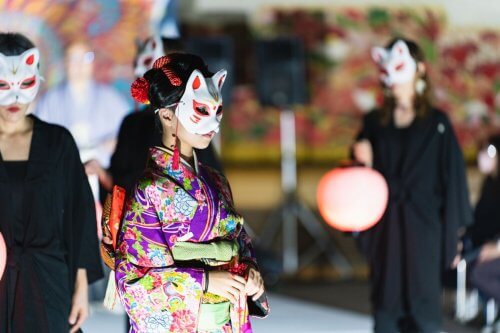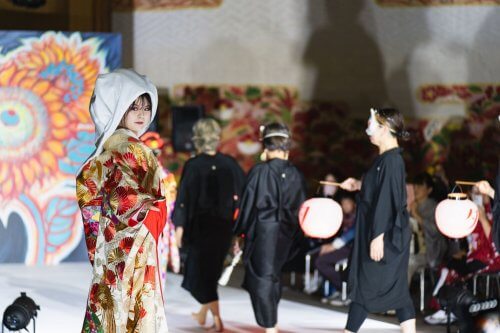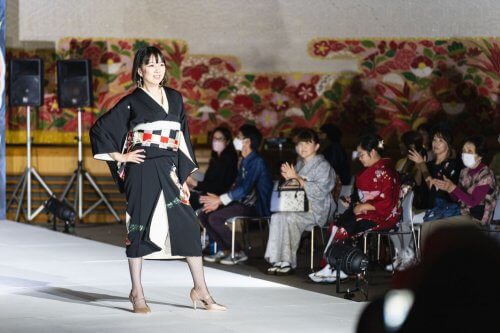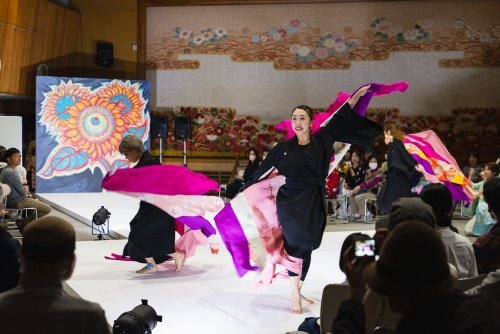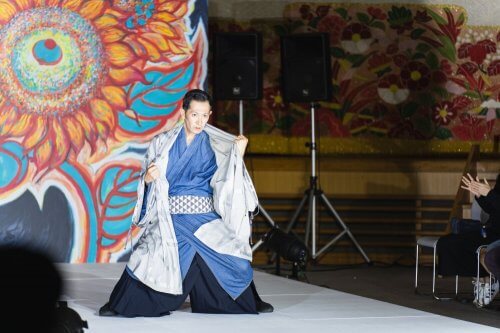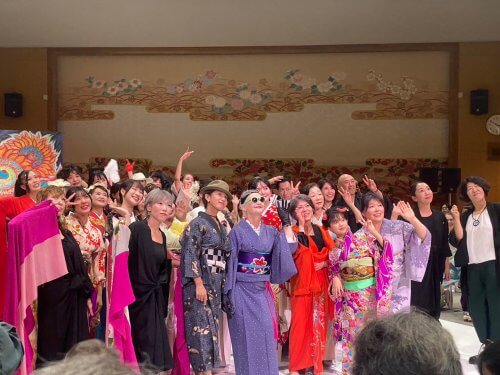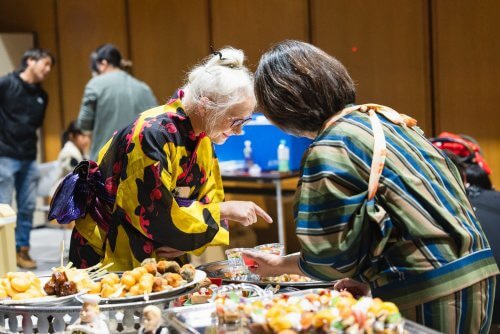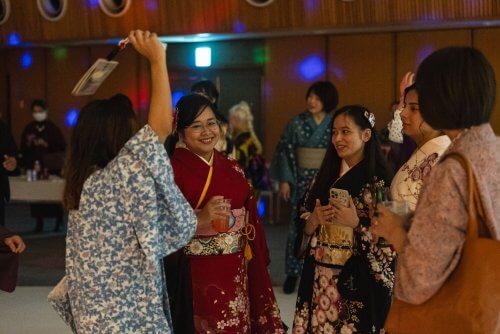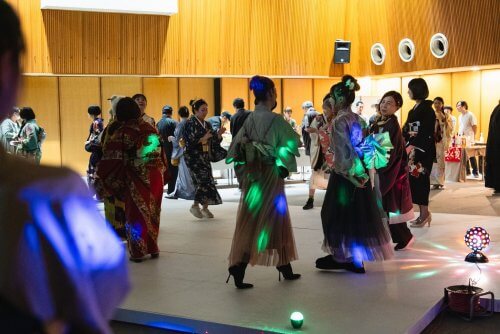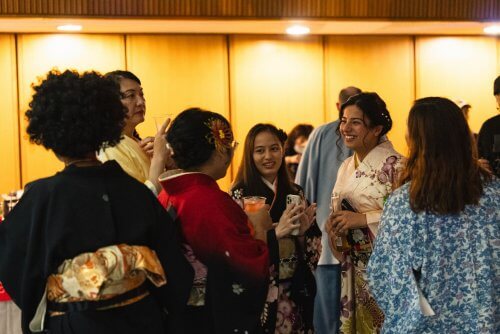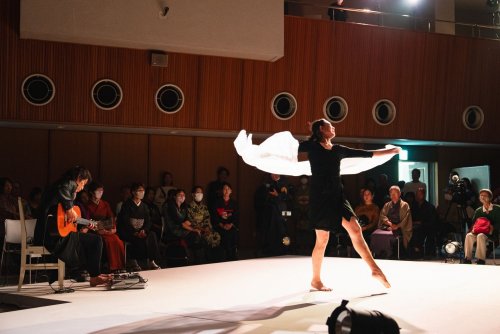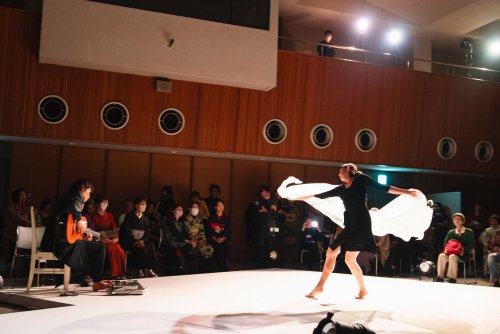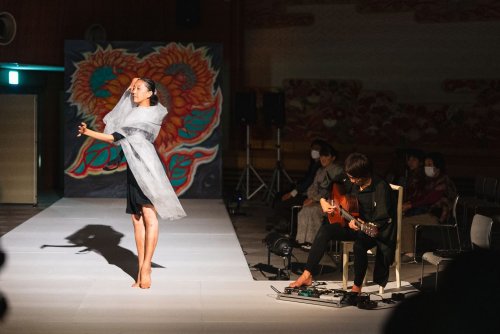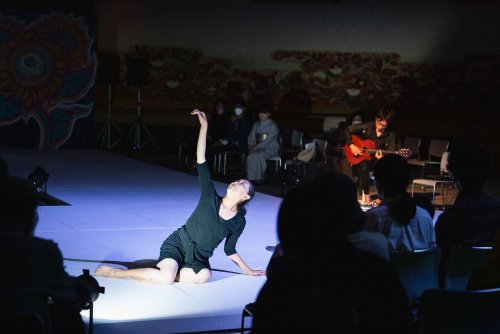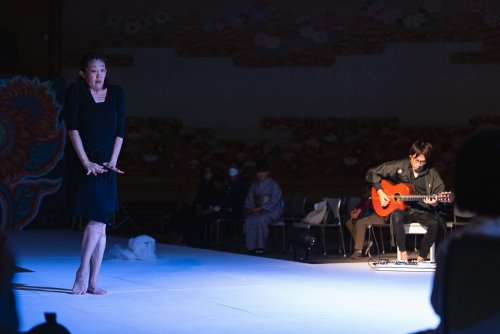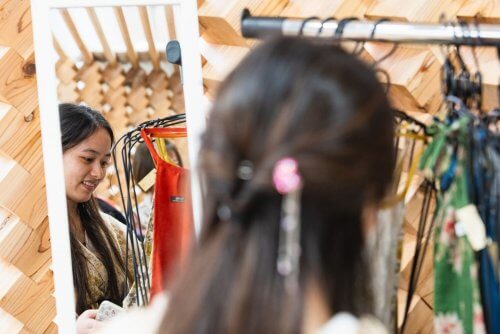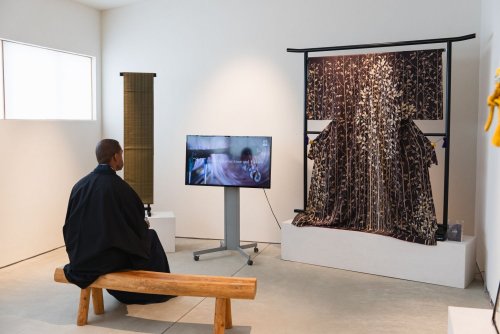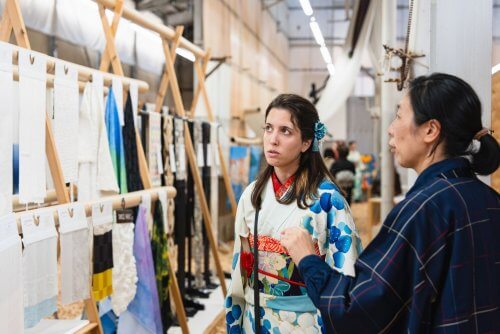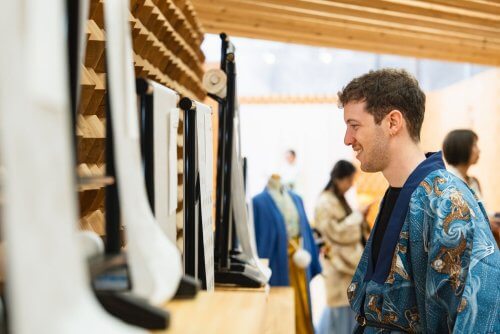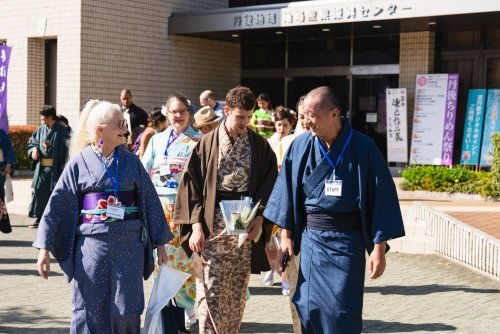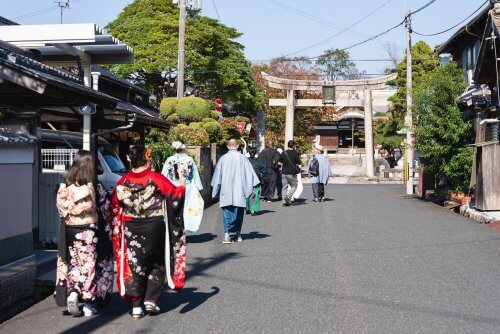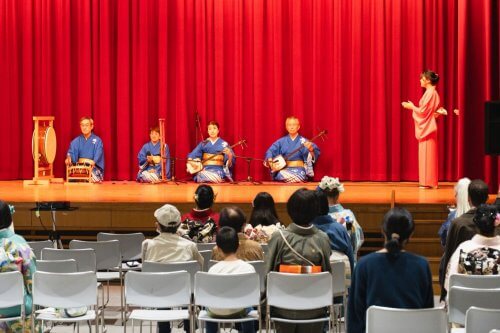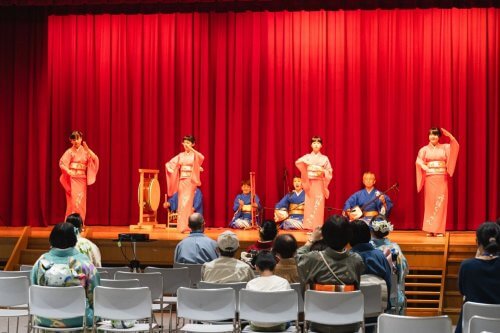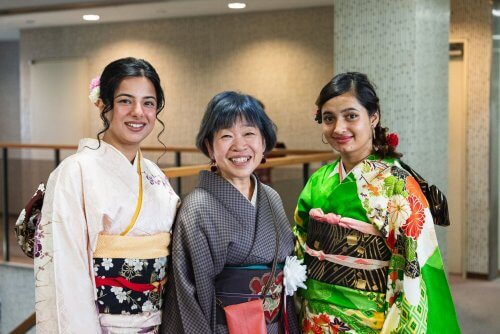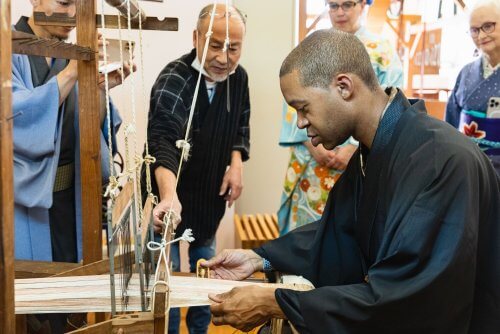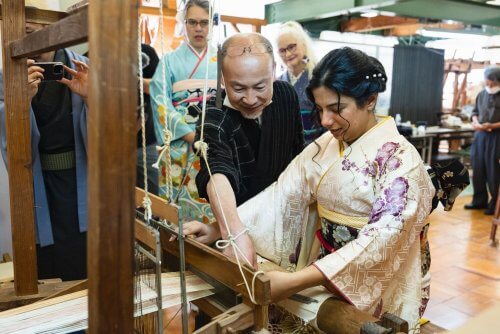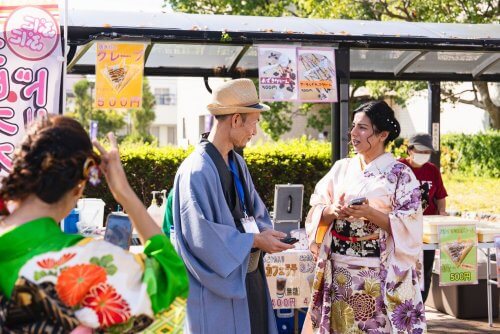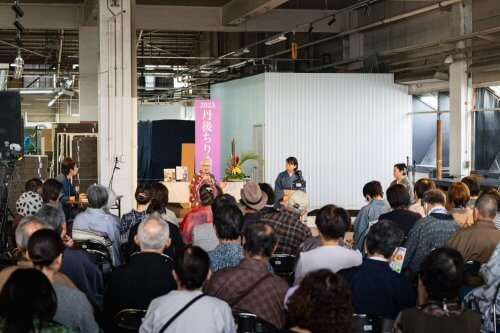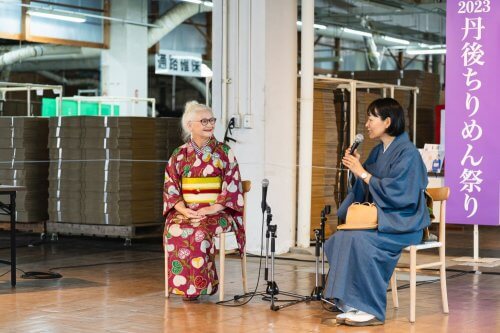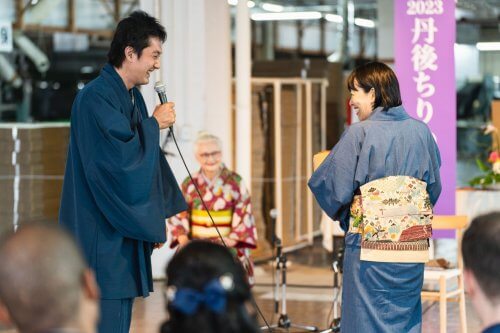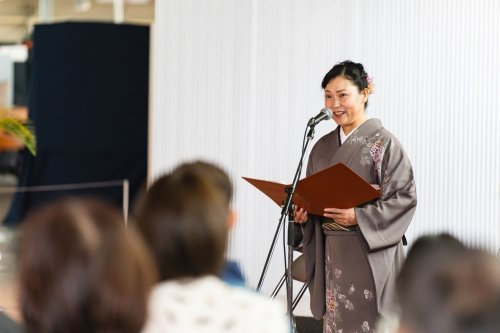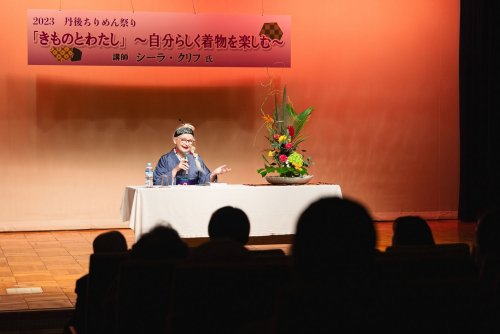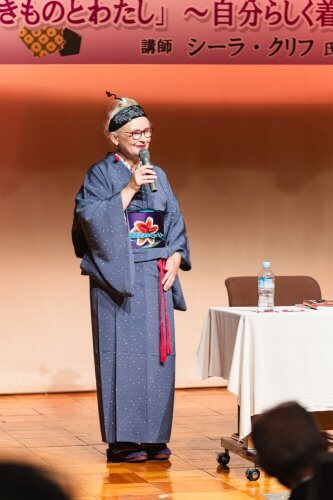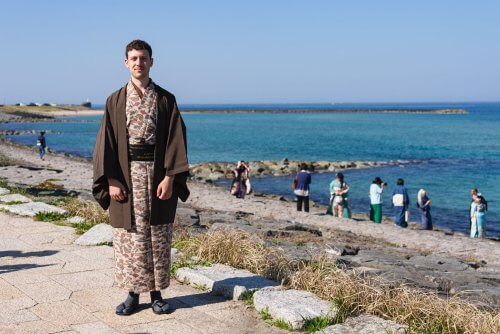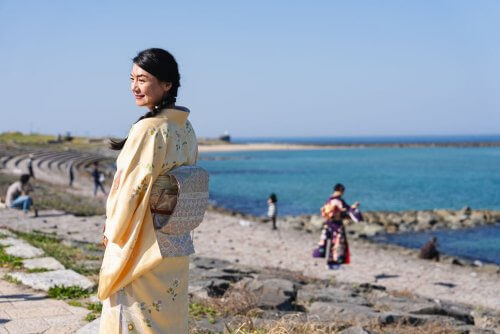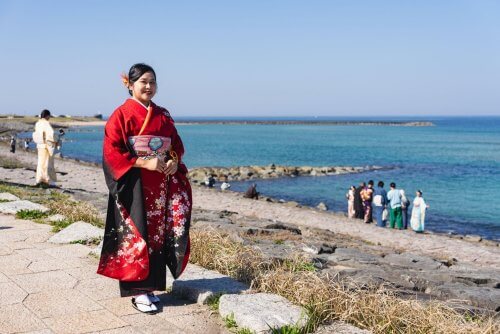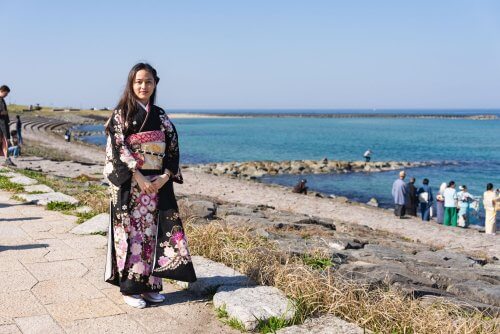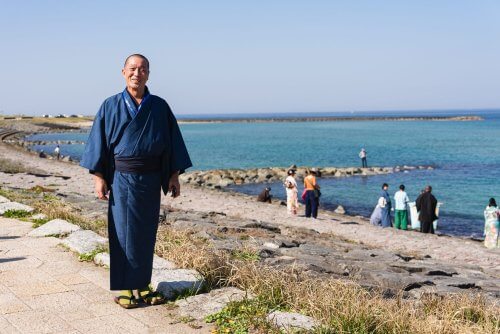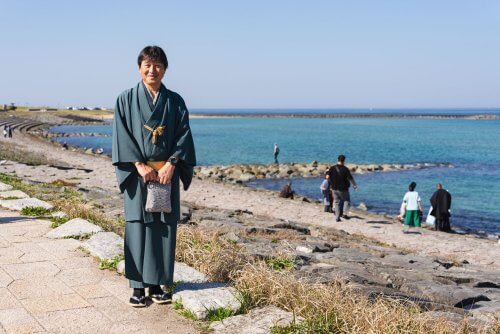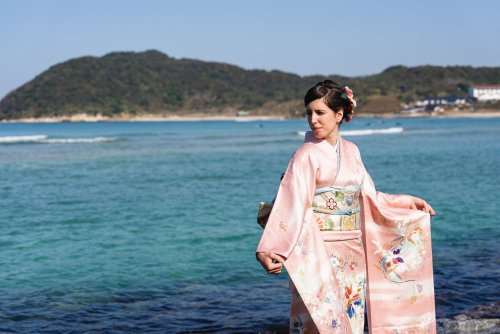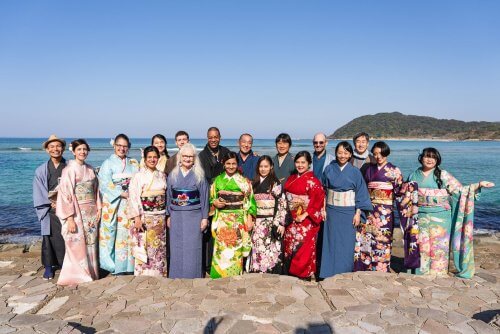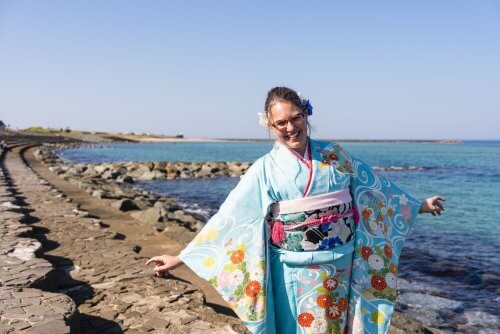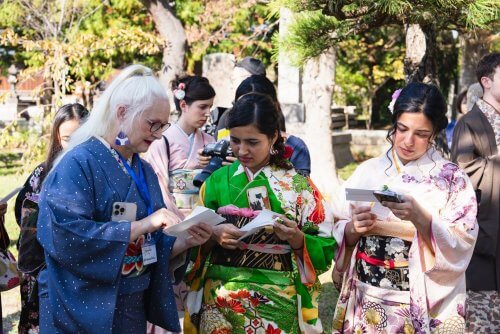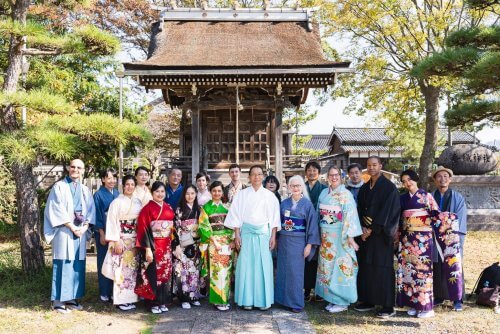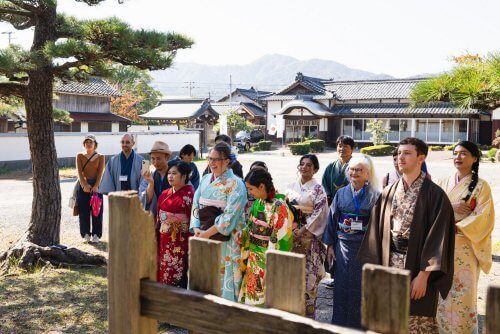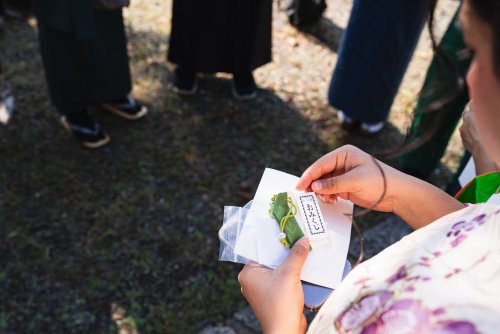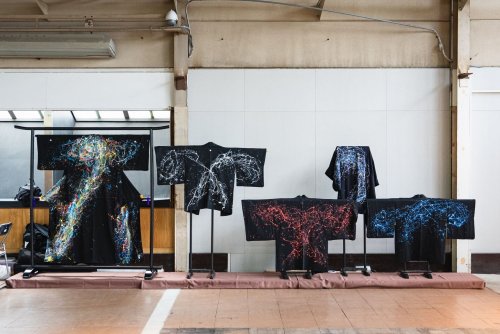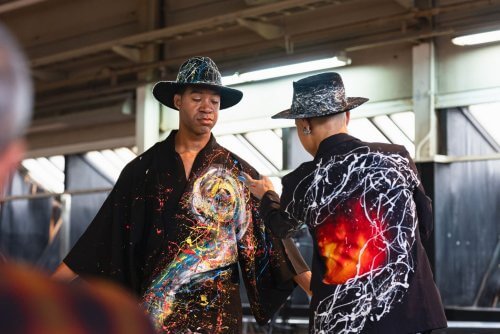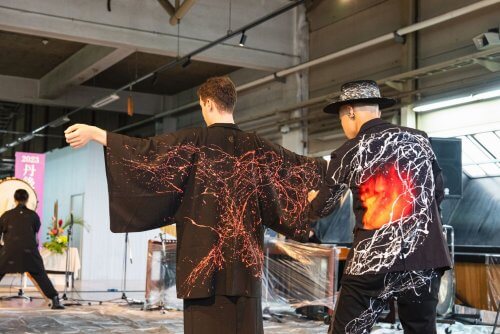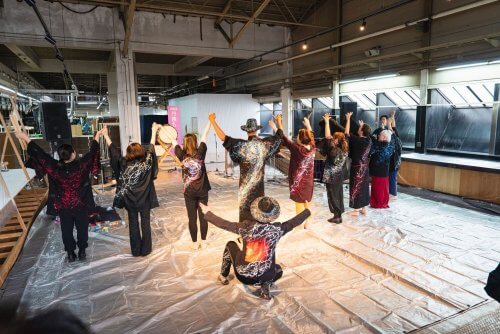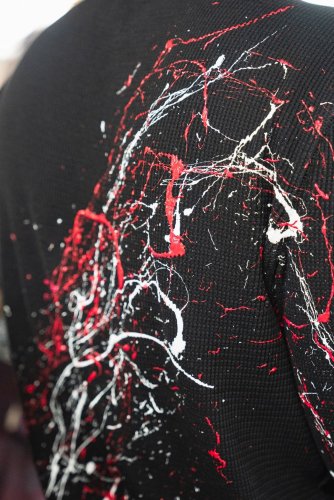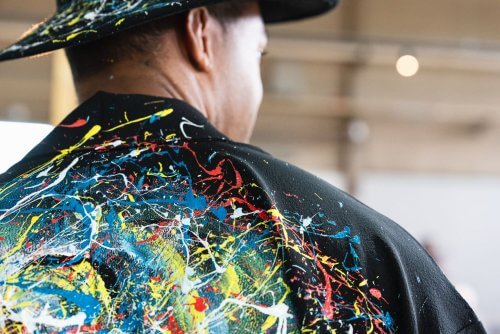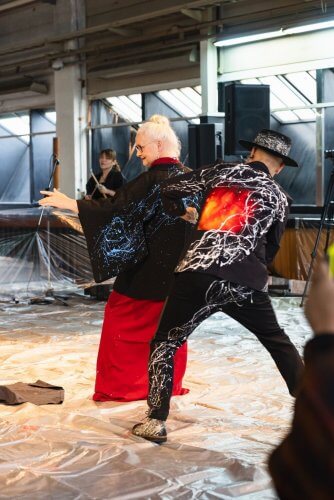
ABOUT CHIRIMEN SILK
Tango has long been the home of textiles, and the silk crepe called Tango Chirimen silk. It originated in the Edo period over 300 years ago, and has been an important part of not only Japanese clothing culture but also local people’s lives.
The textile industry has been in the area for 1,300 years, and its history and culture have fostered a townscape and bustle that are still alive today.
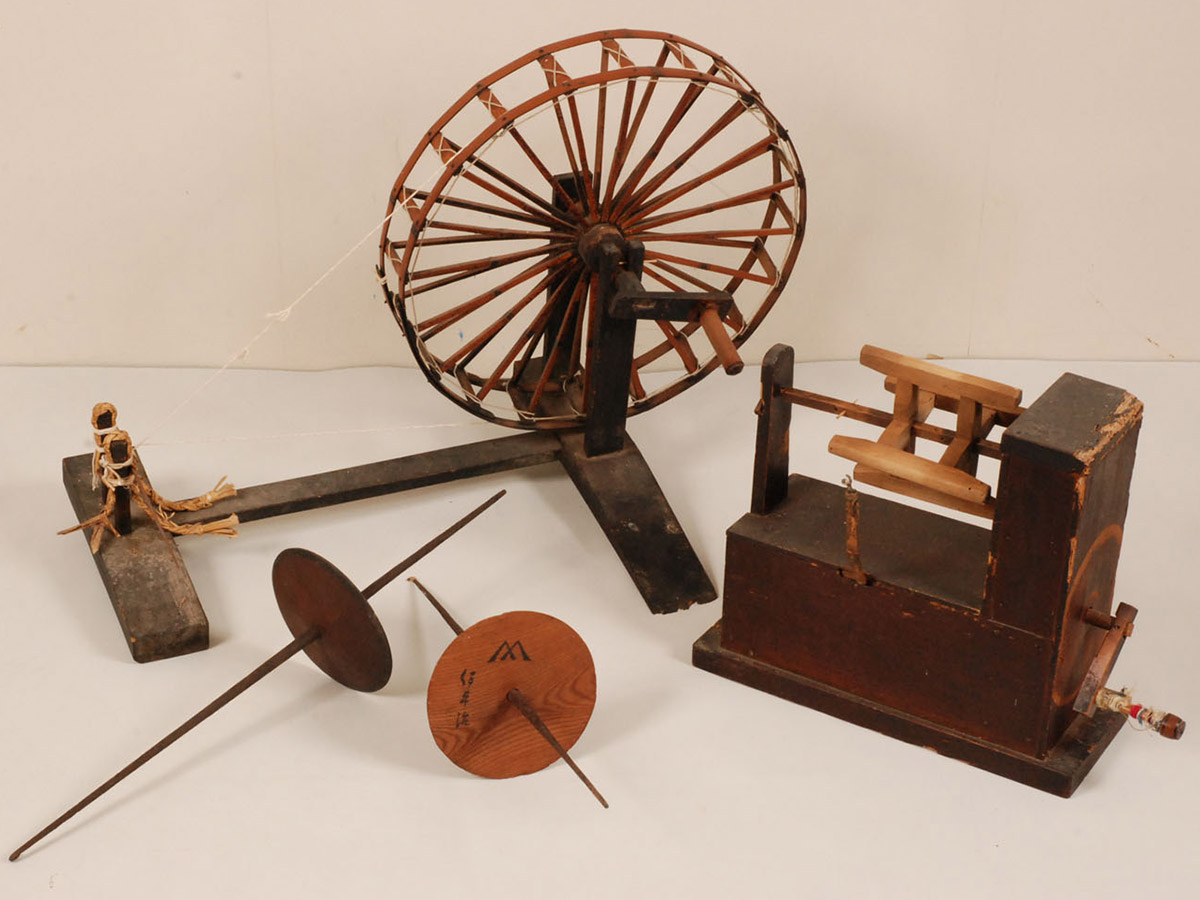
BIRTH OF “TANGO CHIRIMEN”
Chirimen silk itself came about 300 years ago in the Edo period.
Originally, in order to help the poor, Kinuya Saheiji trained and researched in Nishijin, Kyoto, and developed his own crepe fabric, which came to be known as "Tango chirimen". Those who mastered the crepe technique taught it and it quickly spread to the Tango area.
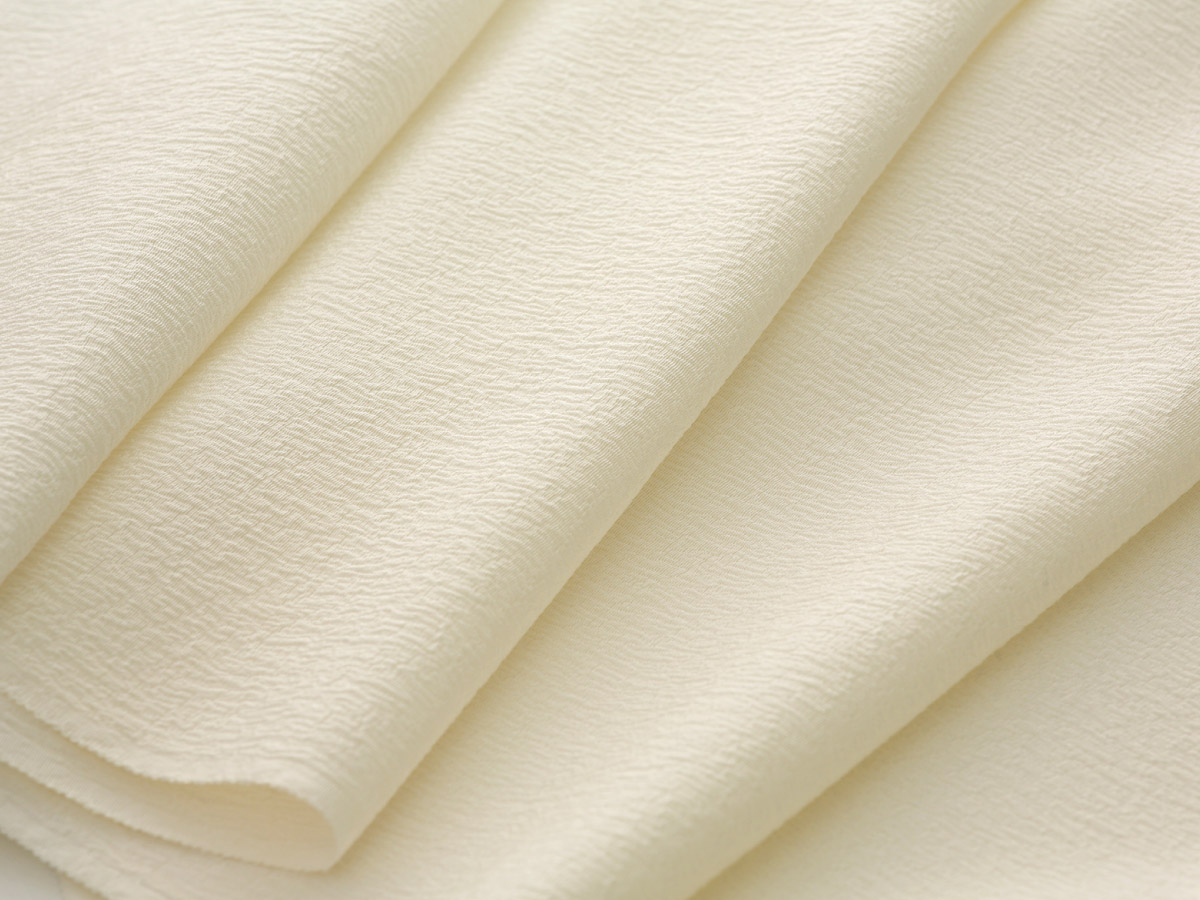
What is Tango Chirimen
Tango chirimen is the name given to crepe fabrics that are woven in the Tango region of Kyoto Prefecture. It is made by using untwisted raw silk for the warp threads and strong twisted threads for the weft threads.
After being wove, the fabric is scoured which causes the fabric to shrink and the bumpy irregularities called shibo to form on the fabric surface. Raw silk is the ideal material for making crepe fabric as its long fibers make it suitable for twisting.
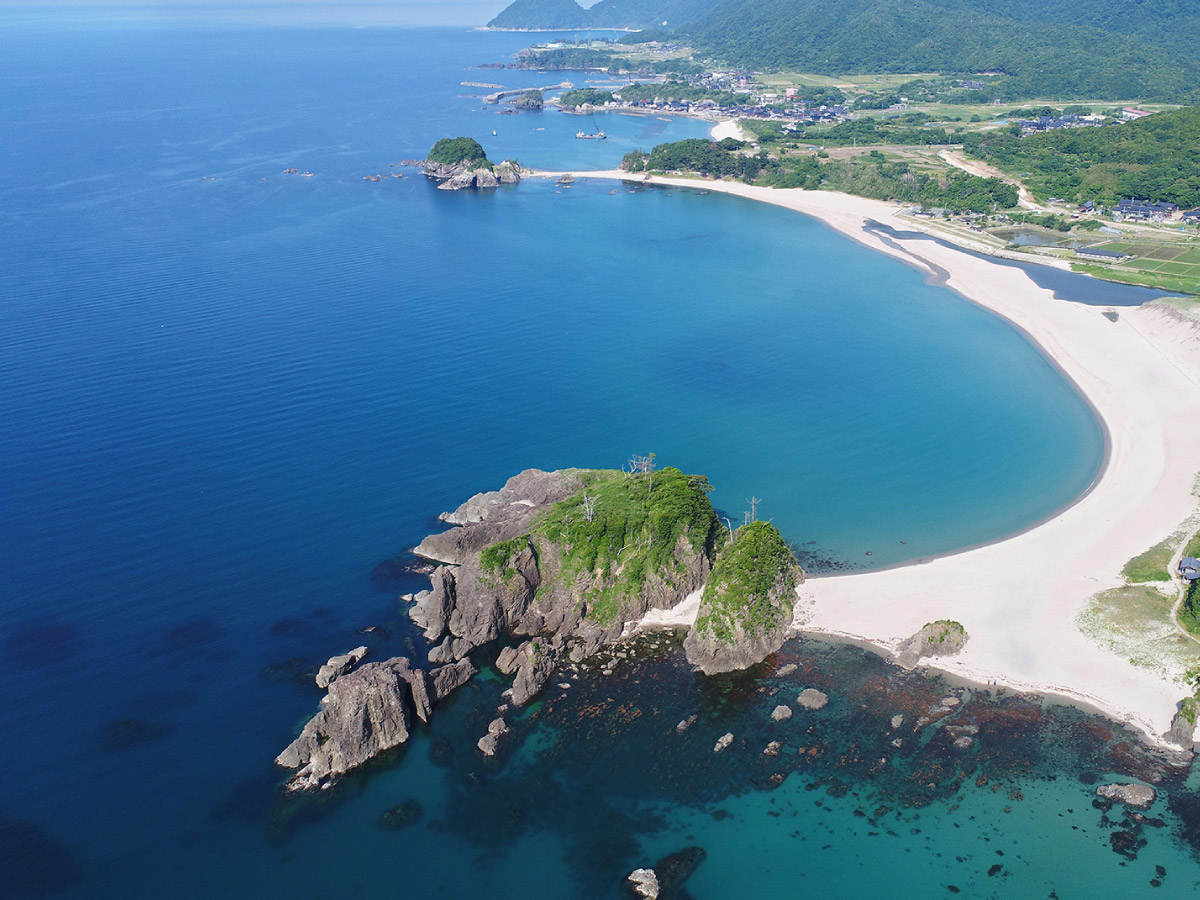
WHY TANGO
The environmental suitability in the Tango region is what helped the silk weaving industry to flourish in this area. Blessed with abundant and high-quality water, and a climate with moderate humidity throughout the year keeps the silk from becoming too dry, thus preventing it from breaking when twisted.
Water, climate, and people's accumulated knowledge and technology. All these conditions combined into one, resulting in the largest silk production area in the country.
JAPAN HERITAGE
Tango chirimen is also recognized as a part of Japan’s heritage. Stories that tell the culture and traditions of Japan through the historical attractions and characteristics of the region are certified as "Japan Heritage" by the Agency for Cultural Affairs. The aim is to revitalize the region by comprehensively developing and utilizing attractive tangible and intangible cultural properties in a comprehensive manner and disseminating them both domestically and internationally.
TO THE WORLD
Tango is the largest silk fabric producing area in Japan, boasting a 70% share of national production. Tango's weavers have supported the world of silk weaving for a long time with their tenacity to "somehow give it shape“ even when they receive difficult requests.
Since 2005, Tango's champions have taken on the challenge of overseas expansion. The results are manifested in the use of Tango fabrics by global brands. While making use of the 300-year-old tradition of Tango chirimen, the "TANGO OPEN" brand was launched. It incorporates new techniques and designs, and develops products that go beyond kimono to encompass entire lifestyles. Even in this era of diversity, we are constantly evolving as a world-class technology.

Sightseeing, Shopping, & Activities
Sightseeing Spots
-
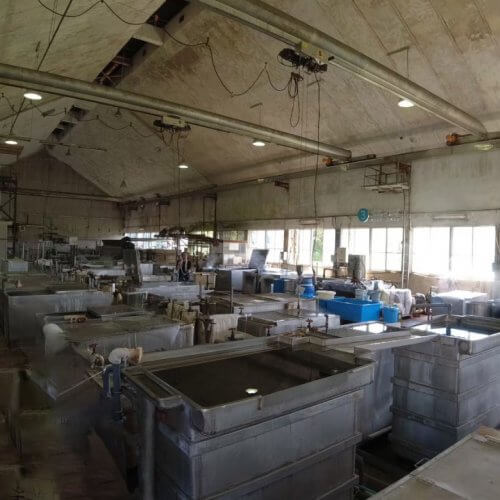
Tango Open Center
After weaving the silk fabric goes through a cleaning process to remove the sericin protein still on the silk threads. This cleaning process also shrinks the fabric a little bit and makes it softer to the touch. After cleaning the fabric is inspected for faults to guarantee its quality.
-
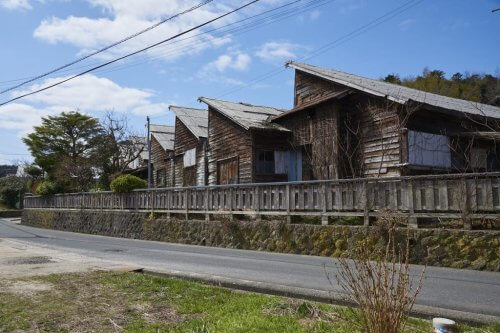
Ashiyone Weavers
A textile factory in Amino (Kyotango City). The buildings date back to the 1920’s. Their sawtooth-shaped triangular roofs were typical of textile factories of the time.
-
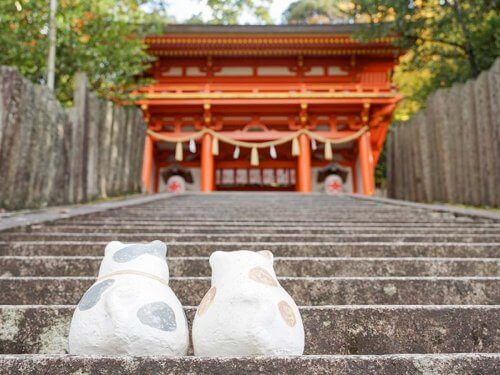
Kotohira Jinja Shrine
Established in 1811, Kotohira Jinja Shrine is the only shrine in Japan with Komaneko (guardian cats). They were built to represent and honor the cats which would protect the silk worms, important for the local silk industry, from mice and rats.
-
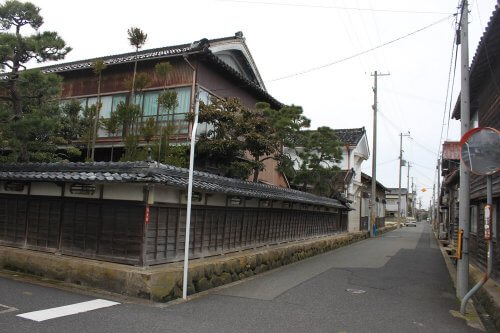
Amino & Yasaka Weaving Shop Street
Many of the Tango chirimen factories are cottage factories, or small mills attached to residences. These weaving shops dot the streets around Amino and Yasaka.
-
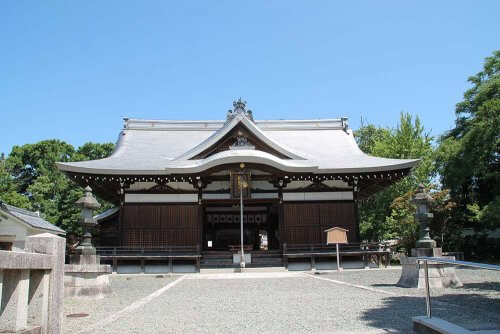
Amino & Kaori Shrine
Kaori Shrine, located within the precincts of Amino Shrine, was established in 1925 by local people involved in chirimen and sericulture to worship the god of textiles and sericulture.
-
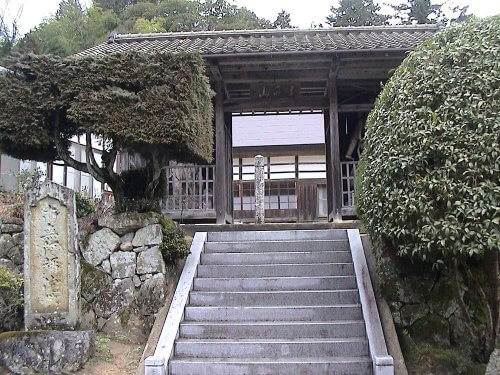
Zenjo-ji Temple
When Tango’s textile industry was in decline, a local weaver prayed here for help. He then traveled to Kyoto to learn the technique that would become chirimen. It is said that the first cloth he wove was donated to this temple. This cloth is still at the temple, carefully preserved.
-
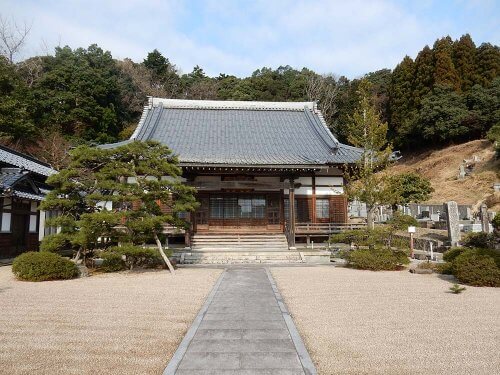
Joryu-ji Temple
Here you can find the tombstone of one of the founders of Tango Chirimen, and is also the family temple of the Kyogoku family of the Mineyama clan. Memorial services are still held today to honor the achievements of Saheiji Kinuya, one of the founders of Tango Chirimen.
-
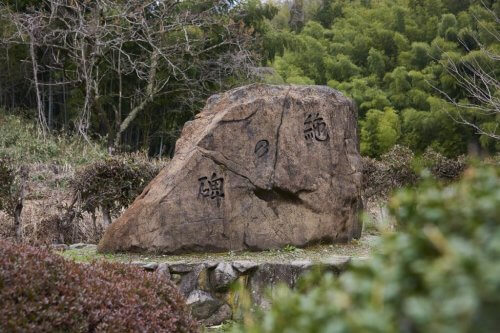
Ashiginu Monument
This is a commemorative monument erected to express gratitude to Tango chirimen’s predecessors and to pray for its continuation.
Shopping
-
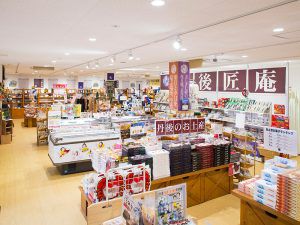
Tango Kingdom
The largest roadside station in western Japan they have a great selection of Tango chirmen souvenirs, as well as lots of locally produced foods.
DETAILS -
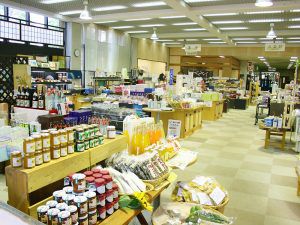
Amity Tango
This souvenir shop specializes in locally produced goods. They have a wide variety of Tango chirimen goods perfect for souvenirs, and also have off-cuts which can be incorporated into other projects.
DETAILS -
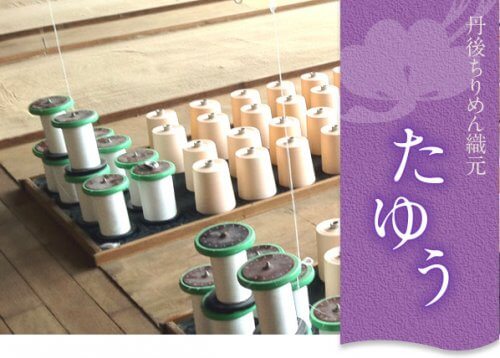
Tayuh Textiles
Inside this Tango chirimen factory is a well-stocked gift shop with lots of great souvenirs, as well as fashionable waistcoats, hats, bags and more.
Activities
-
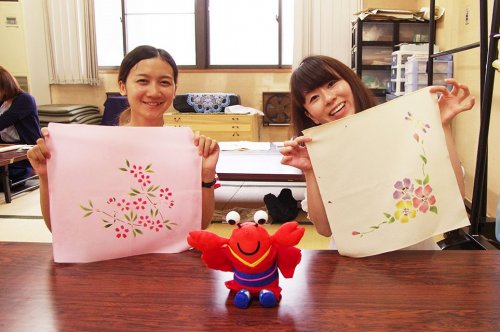
Tango Chirimen Silk Handkerchief Dyeing
Decorate a handkerchief made from Tango chirimen with a unique pattern. Choose one or more stencils and whatever colors you please to make an original souvenir.
DETAILS -
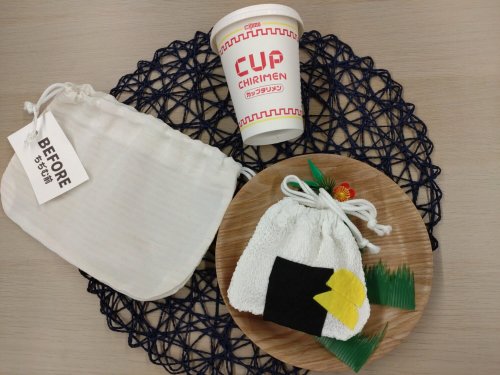
Visit a Tango Chirimen Silk Processing Plant
After a tour of the largest Silk Processing Plant in Japan and learning about the history and production of Chirimen Silk, make your own chirimen goods to take home.
DETAILS -
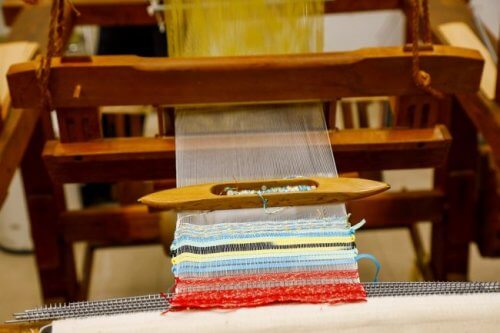
Original Silk Coaster Hand-Weaving
Experience the trade that Kyotango is famous for with a hands on weaving activity. You’ll get a unique souvenir made with colors of your choice to take home with you.
DETAILS


